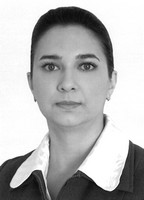Age-specific profiles of retired athletes' heart rate variability and psychoemotional status in post-retirement adaptation period
Фотографии:
ˑ:
Teoriya i praktika fizicheskoy kultury №9 2017, pp.62-64
PhD, Associate Professor I.V. Fedotova1
Dr.Med., Professor M.E. Statsenko2
Dr.Med., Associate Professor V.V. Skvortsov2
PhD, Associate Professor V.G. Zaitsev2, 3
1Volgograd State Physical Education Academy, Volgograd
2Volgograd State Medical University, Volgograd
3Volgograd State University, Volgograd
The article gives an analysis of the age-specific profiles of retired high-ranking athletes’ heart rate variability and psychoemotional status in correlation with the vegetative regulation process in post-retirement adaptation period. Subject to the study were 124 high-ranking retired athletes of the both genders with retirement records under 5 years. Group 1 was composed of 65 former athletes of 18-21 years of age, and Group 2 included 59 former athletes aged 22-25 years. The heart rate variability was rated using the R.M. Bayevskiy Test (2001) with short 5-minute ECG records being obtained. The subjects’ psycho-emotional status and stress exposure rates were obtained using the Neurotization and Psychopathization Scale and Rider’s Stress Test.
The study data and analyses made it possible to find the statistically meaningful changes in vegetative regulation connected with the psychological status variation in the former athletes; and this finding urges due medical and psychological service being provided to retired athletes as soon as they retire.
Keywords: heart rate variability, ex-athletes, psychoemotional status.
References
- Sivyakova O.N., Konyuk E.F. Diagnostika i lechenie neyro-tsirkulyatornoy distonii [Neurocirculatory distonia: diagnostics and treatment]. Rossiiskii kardiologicheskii zhurnal, 2006, no.1(57), pp. 44-47.
- Fedotova I.V., Bakulin V.S., Tamozhnikova I.S. Nekotoryie aspektyi vzaimosvyazi psihoemotsionalnogo sostoyaniya, urovnya stressogennosti i pokazateley variabelnosti serdechnogo ritma u eks-sportsmenov v zavisimosti ot gendernyih osobennostey.[Some gender-specific aspects of relationships between psychoemotional status, stress level and heart rate variability indices in ex-athletes]. Scientific Review Proc. international scie. conf., 2015, pp 543-550. [In Russian]
- \Fedotova I.V., Statsenko M.E. Sravnitelnaya otsenka psihoemotsionalnogo sostoyaniya i urovnya stressogennosti u byivshih i deystvuyuschih sportsmenov [Comparative evaluation psychoemotional state and gaveese impact level of former and active athletes]. Vestnik novykh meditsinskikh tekhnologiy. 2009. V. 16. no. 4. P. 95-96. [In Russian]
- Fedotova I.V., Statsenko M.E., Bakulin V.S. Osobennosti pokazateley variabelnosti serdechnogo ritma i kachestva zhizni u deystvuyuschih i byivshih sportsmenov [Features of heart rate variability and quality of life among the acting and former athletes]. Uchenye zapiski universiteta im. Lesgafta. 2015. no. 2 (120). P. 182-186.
- Chang H.A., Chang C.C., Kuo T.B., Huang S.Y. Distinguishing bipolar II depression from unipolar major depressive disorder: Differences in heart rate variability. World J. Biol Psychiatry, 2015, no.24, pp. 1-10.
- Cukic I.N, Bates T.S. The Association between Neuroticism and Heart Rate Variability Is Not Fully Explained by Cardiovascular Disease and Depression. PLoS One, 2015, 10(5):e0125882. doi: 10.1371
- Esco M.R., Flatt A.A. Ultra-short-term heart rate variability indexes at rest and post-exercise in athletes: evaluating the agreement with accepted recommendations. J Sports Sci Med., 2014 Sep., no.13(3), pp. 535-541.



 Журнал "THEORY AND PRACTICE
Журнал "THEORY AND PRACTICE